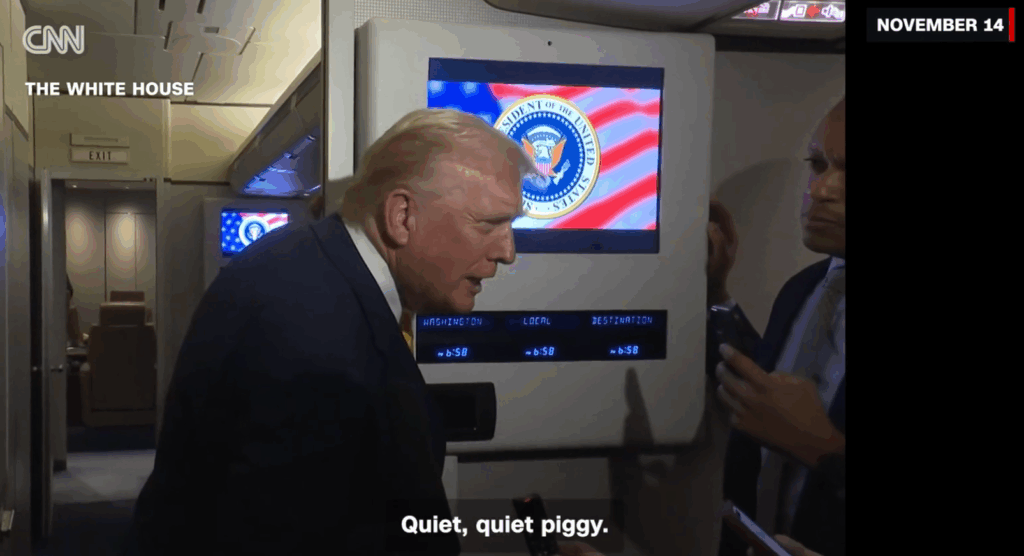Arising tide may lift all boats, but when it comes to the growth of the promotional marketing industry, not all boats are rising as quickly or as far as others this past year.
For the third consecutive year, PROMO’s Industry Trends Report tracked an increase in promotional marketing spending among brand marketers, coming in at 8.9% for 2004. In fact, only once in 13 years has promotion failed to show growth (it dropped 3.7% in 2001 in the depths of the recession). In those 13 years, promotion has logged better growth than the U.S. GDP.
It shouldn’t be surprising that 2004 was a big year for marketers and the agencies that support them. It was the year of the Athens Summer Olympics and a U.S. presidential election; further, Internet marketing made a powerful rebound and several exciting new technologies (especially digital music and online games) drew in both consumers and marketers.
Weighing against these upbeat factors, however, were skyrocketing oil prices and lackluster job recovery as manufacturing continued to migrate overseas. With oil priced over $50 per barrel and unemployment stuck above 5%, only 26% of consumers told The Conference Board in January 2005 that “business conditions were good;” 18.2% described them as “bad.” At the same time, a study by Roper Reports found consumers were extremely cautious due to concerns over inflation and high prices (70% according to a December poll).
How did marketers respond to this mixed bag of economic factors? Of those polled by PROMO, 45.8% said they turned to promotion to help build their brands’ equity and sales. This was down from two years ago, when 53.1% expressed this balanced approach. In fact, there was apparent retrenchment during the year, as marketers relied on promotion to drive sales (43.5% in 2004 vs. 34.9% in 2002).
Whether the emphasis is on the tactical or strategic impact of promotional marketing, there is a continuing trend to bring it into the planning process from the start. Over 55% of brand execs surveyed said they developed promotion planning as part of an overall marketing strategy; this is up from 52.6% two years ago. Another segment followed a “separate-but-equal” approach, planning promotions separately from other marketing efforts (14.3% in 2004, compared to 16.6% in 2002). A third group of marketers continue to view promotion as a “leftovers” discipline, planning those components after media advertising, p.r. and other marketing strategies are locked in (29.2% in 2004 vs. 30.9% in 2002).
Chipping away at that last category may be another trend: 64.3% of brand marketers surveyed this year said that their top leadership (CEO, president or owner) took part in developing promotion strategy. At the same time, 38.7% said that their chief financial officers regulated the marketing budget and its components — and anecdotal evidence suggests that CFOs tend to push brand management toward marketing disciplines that are highly measurable (like most promotion tactics). Integration blurs the lines
With senior management lending a broader perspective to marketing, over 84% of brand execs said that their groups integrate all marketing communications (all promotion as well as media and p.r.). This is up from 79% in last year’s report; two years ago, the question wasn’t even asked.
While uniform messaging across creative and agreement in terms of goals inevitably drives results, it can make tracking more of a challenge. For example, as advertising in support of promotional campaigns appears more frequently for the Internet and traditional media (TV, radio, outdoor, etc.), should the marketing team allocate those media buys to the promotion budget, advertising or even a separate Internet line? In 2004, 73% of brands reported that some portion of their ad budget went to promotion-related ads; at least 70% have already planned similar media buys in support of promotion in 2005.
A similar vagueness persists in the divide between in-store/co-marketing budgets (up 5% in 2004) and trade marketing allocations (down to 24.9% in 2004 from 27% reported in 2002).
Better metrics may shed clarity on these points. A majority of marketers said they were investing in measurement processes — but 29.8% admitted they still do not measure the investment return (ROI) from their marketing initiatives. (There is some consolation in that this is an improvement over the 2003 report, when 44% said they didn’t measure ROI.) Uneven yield
As noted, marketers spent more willingly in 2004. As brands were refreshed and extensions were launched, a lot of work was outsourced to agencies and other specialists (37.5% said they outsourced more in 2004; just 18.5% outsourced less than in 2003). Some agencies parlayed their special skills into double-digit growth (see p. AR7) even as brand departments returned to hiring mode (nearly a third said they increased headcount over the year). Forty-one percent of brand managers said they kept their agency relationships (agency of record) intact throughout the year.
Promotional spending was concentrated in many of the same areas that rode high last year: event marketing, premiums and incentives, and direct (see Charts 1 and 5). Internet and other interactive tools gained significant momentum over the year, often at the expense of traditional advertising media.
And the prospects for 2005? It won’t be a banner year, according to the survey participants; over 58% expect to keep their marketing budgets flat against 2004. But some brands (5.4%) will boost spending more than 20%, and certain tactical areas will grow. As for the agencies that support those efforts, most are optimistic.
“No question that 2005 will be a very different year from 2004,” wrote in one respondent to the agency survey. “We’ve secured four new clients in just the past four months. Clearly spending is up.”
Spending (in billions) TACTIC 2003 2004 % INCREASE % TOTAL Event marketing $151.8 $166.0 9.0% 53.0% Premiums & incentives 45.9 46.5 1.5 14.8 Direct mail 30.5 35.1 17.4 11.2 Retail 17.6 18.5 5.0 5.9 Sponsorship 9.8 11.1 8.4 3.5 Coupons 7.0 7.2 2.2 2.3 Specialty printing 5.9 6.1 4.0 1.9 Licensing 5.8 5.9 1.0 1.8 Fulfillment 4.1 4.7 14.0 1.5 Agency revenues 3.8 4.2 12.0 1.3 Interactive/online 2.0 2.4 25.0 0.7 Loyalty 1.9 2.0 4.8 0.6 Games, contests, sweeps 1.8 1.8 0.0 0.5 Sampling 1.5 1.8 20.0 0.5 TOTAL $289.3 $313.2 8.9% 100% Source: PROMO 2005 Industry Trends Report
The Mix DISCIPLINE % 2004 MKTG. BUDGET Consumer promotion 30.5% Advertising 39.4 Trade promotion 24.9 Other 5.2
Outsourcing BRANDS RELY ON AGENCIES % REPORTING More work outsourced in ’04 35.7% About the same outsourced as in 03 43.5 Less work outsourced in ’04 18.5 Source: PROMO 2005 Industry Trends Report Methodology
In February 2005, the Primedia Business Magazines and Media Research department e-mailed two surveys to PROMO readers and members of the Promotional Marketing Association. Brand marketers completed one set of questions and agency executives completed another. The results were then compiled for PROMO’s editors, who weighed the findings with their own reporting among industry sources.
History YEAR NET REVENUE % GROWTH 1991 $56.35 n/a 1992 57.10 1.3% 1993 61.90 8.4 1994 65.60 6.0 1995 70.02 6.7 1996 71.53 2.2 1997 79.40 11.0 1998 85.40 7.6 1999 93.44 9.4 2000 102.50 9.7 2001 98.04 -3.7 2002* 233.17 137.0 2003** 288.29 23.6 2004 $313.2 8.9% *Included event marketing for first time **Included direct and loyalty marketing for first time Source: PROMO
Brands spent most on TACTIC % Direct mail 37.5 Trade shows 33.9 Internet marketing 24.4 Co-mktg./account-specific 19.0 Sponsorships 18.5 Ad specialties 17.9 Event/mobile mktg. 17.3 Coupons 16.7 P-O-P 16.7 Premiums/incentives 14.9 Games/contests/sweeps 13.1 Sampling 13.1 Entertainment mktg. 7.1 Specialty printing 6.0 In-store services 5.4 Fulfillment 4.8 Research 4.8 Tie-ins/alliances 3.6 Licensing 1.8% Note: Subjects asked to cite top three spending areas Source: PROMO 2005 Industry Trends Report






